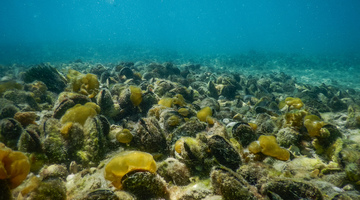Listen as Professor Conrad Pilditch describes the hidden marine infrastructure – the ecosystem1 interactions – that provide many of the goods and services we get from our oceans.
Transcript
Professor Conrad Pilditch
The coastal environment means many, many different things to different people. No matter what part of New Zealand you are from, you are probably interacting with the coast. The coast is probably the most contested and multiuse space that we have in Aotearoa2. A lot of the goods and services that we obtain from the coast – leisure, recreation, food provision, cultural and spiritual values – is all underpinned by hidden infrastructure that you really don’t think about or interact with very much.
The hidden infrastructure is the interactions that occur between animals and the plants and their environment. These interactions are really, really complex, often nonlinear. They operate over multiple, different temporal (time) and spatial scales. So, when we take for example, the shellfish that exist in our estuaries3 and harbours. When in high densities, the filtration capacity or the ability to keep the water clear means that that will sustain aquatic4 vegetation5. That aquatic vegetation may be habitat6 for juvenile fish that ultimately provides food provision in offshore waters. It’s those hidden interactions in the hidden infrastructure that maintains all these goods and services, that as a society and culture we enjoy about our coastal environments.
This hidden infrastructure is under threat and can be impacted by the activities we have in the marine environment. And particularly in the coastal environment, often the activities (that impact the ocean) are occurring on land.
Acknowledgements
The Science Learning Hub acknowledges the contribution of the Sustainable Seas National Science Challenge and Professor Conrad Pilditch.
Footage supplied by the Sustainable Seas National Science Challenge.


